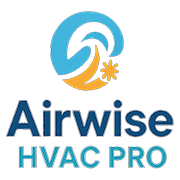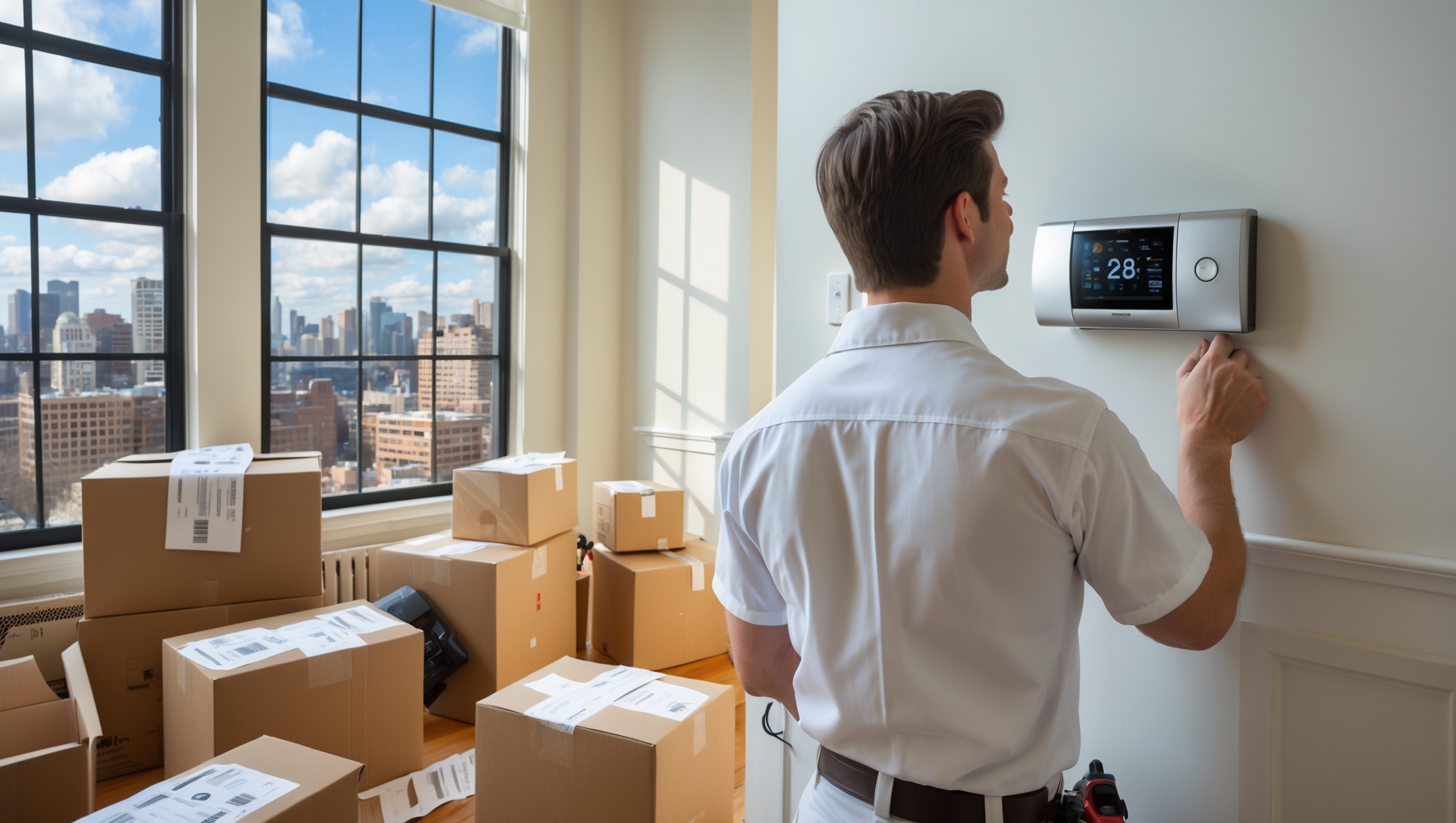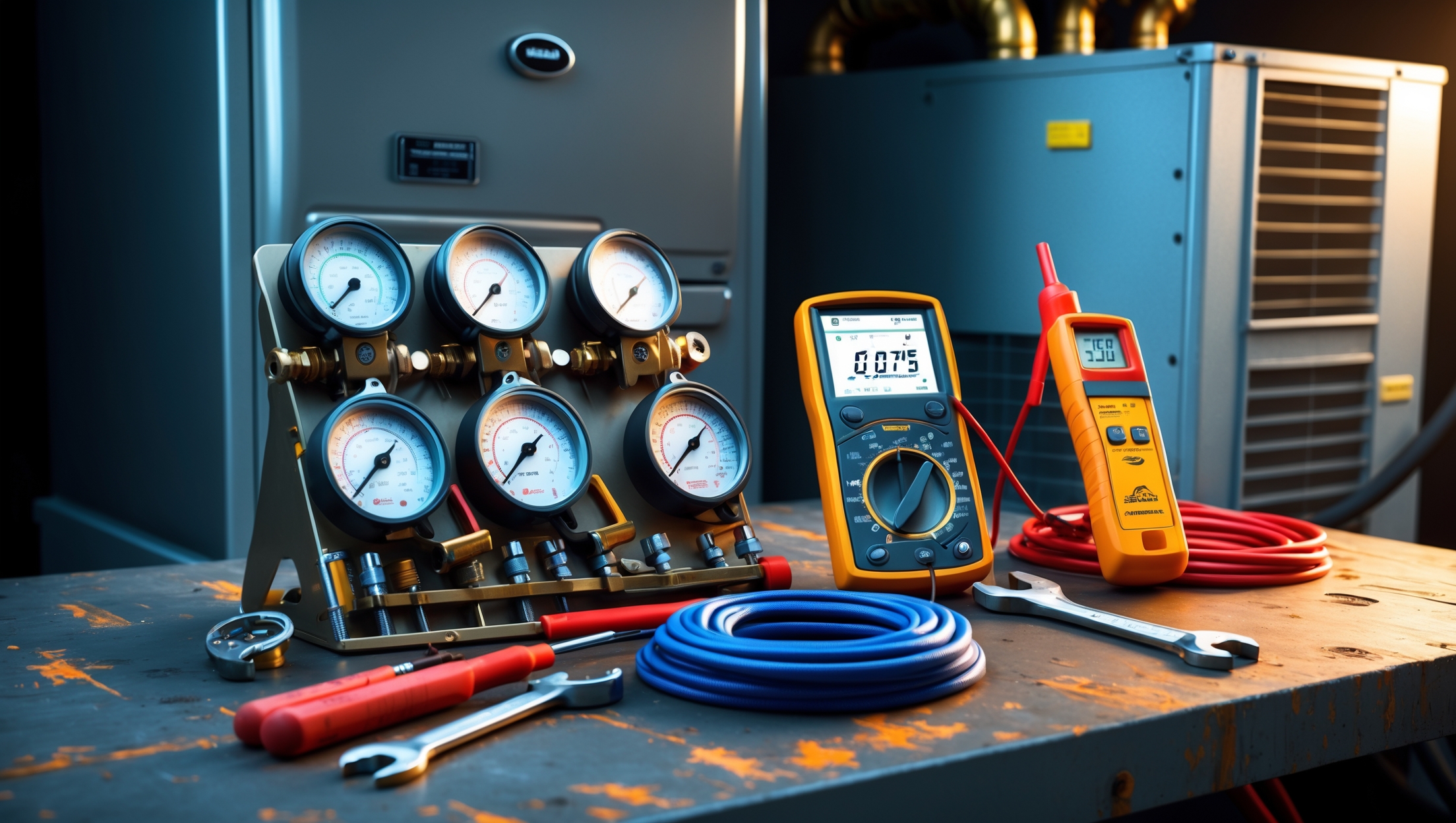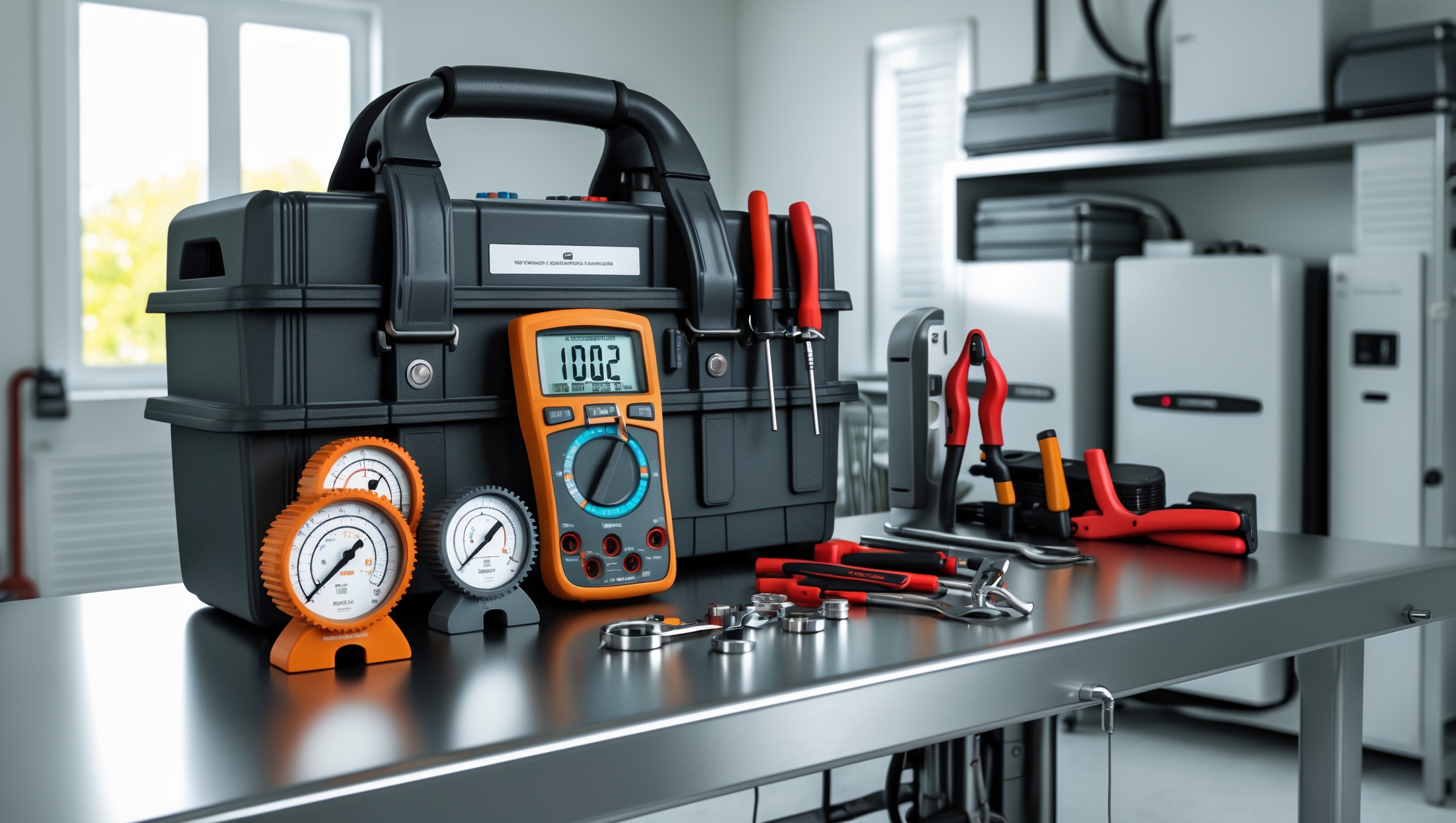When it comes to heating, ventilation, and air conditioning (HVAC), misinformation is everywhere—passed down from neighbors, repeated by well-meaning friends, or even perpetuated by outdated marketing. These myths can lead to expensive mistakes, wasted energy, uncomfortable indoor environments, and even premature system failures. Whether you’re a homeowner trying to keep your family comfortable, a contractor aiming to deliver quality service, or a property manager responsible for multiple units, knowing fact from fiction is crucial. In this post, we’ll dissect the most common HVAC myths, explain why they persist, and provide you with practical, actionable truths to ensure your HVAC system runs efficiently, safely, and cost-effectively year-round.
We’ll break down each myth, show you the real impact it can have, and equip you with the knowledge you need to make better decisions—whether you’re considering a new system, maintaining an existing one, or fielding questions from tenants and clients. Let’s clear the air and put these HVAC misconceptions to rest once and for all.
Myth #1: “Bigger HVAC Systems Always Mean Better Comfort”
Why This Myth Persists
The logic seems sound: If a 2-ton system cools your home, wouldn’t a 4-ton system do it twice as fast and better? In reality, oversizing is one of the most costly mistakes in HVAC.
The Real Facts
- Oversized systems cycle on and off more frequently, leading to uneven temperatures, increased wear, and higher energy bills.
- They often fail to dehumidify air properly, leaving indoor spaces clammy and uncomfortable.
- Proper sizing should be based on a Manual J load calculation, not guesswork or square footage alone.
What You Should Do
Always insist on a professional sizing assessment before purchasing or replacing an HVAC system. For contractors and property managers, educating clients on this point can prevent callbacks and dissatisfaction down the line.
Myth #2: “Closing Vents in Unused Rooms Saves Energy”
Why This Myth Persists
This advice seems logical if you equate it with turning off lights in empty rooms. Unfortunately, HVAC airflow doesn’t work that way.
The Real Facts
- Closing vents increases pressure in the ductwork, potentially causing leaks and making your system work harder.
- It can lead to decreased efficiency, uneven heating/cooling, and accelerated equipment wear.
- Modern systems are designed for balanced airflow; disrupting this balance can hurt both comfort and energy usage.
What You Should Do
Keep all vents open and unobstructed. If you want more control over room temperatures, consider installing a zoning system or dampers professionally designed for your HVAC setup.
Myth #3: “Air Filters Only Need Changing Once a Year”
Why This Myth Persists
Out of sight, out of mind. Many property owners and tenants forget about air filters until there’s a problem—or mistakenly believe annual changes are sufficient.
The Real Facts
- Dirty filters restrict airflow, reducing efficiency and straining your system.
- Changing filters regularly (typically every 1-3 months, depending on use and filter type) improves air quality and extends equipment life.
- Homes with pets, allergies, or high occupancy often need more frequent changes.
What You Should Do
Set a reminder to check filters monthly. Contractors should always check filters during service calls, and property managers should include filter changes in maintenance schedules.
Myth #4: “Turning the Thermostat Way Down (or Up) Cools or Heats Faster”
Why This Myth Persists
People often assume their HVAC works like a car’s gas pedal—the harder you press, the faster you go. But thermostats don’t control the speed of heating or cooling.
The Real Facts
- HVAC systems deliver heating or cooling at a set rate, regardless of the thermostat setting.
- Extreme settings only cause the system to run longer, not faster, and may result in energy waste or discomfort.
What You Should Do
Set your thermostat to your desired temperature and let the system work at its designed pace. Programmable or smart thermostats can help maintain comfort without unnecessary energy use.
Myth #5: “Routine Maintenance Isn’t Necessary If the System Works Fine”
Why This Myth Persists
HVAC systems are largely invisible—if it’s blowing air and the house is comfortable, many assume all is well. But this is risky thinking.
The Real Facts
- Lack of maintenance is the leading cause of mechanical breakdowns and reduced efficiency.
- Small issues, like refrigerant leaks or dirty coils, can escalate into costly repairs if ignored.
What You Should Do
Schedule preventive maintenance at least once a year for both heating and cooling (twice, if possible). Property managers should budget for routine inspections across all units, and contractors should educate clients on the long-term savings of regular care.
Myth #6: “Ceiling Fans Make Rooms Cooler, Even When Empty”
Why This Myth Persists
Ceiling fans do provide comfort, but not in the way many people think.
The Real Facts
- Fans move air, creating a wind-chill effect that cools people, not the room itself.
- Leaving fans running in empty rooms wastes electricity without lowering the actual air temperature.
What You Should Do
Turn off fans when you leave a room. Use them strategically to supplement your HVAC and allow for slightly higher thermostat settings without sacrificing comfort.
Myth #7: “Duct Tape Is Great for Sealing Ductwork”
Why This Myth Persists
The name is misleading—”duct tape” sounds like the perfect solution for leaky ducts.
The Real Facts
- Ordinary duct tape dries out, peels, and fails quickly when exposed to the heat and airflow inside ductwork.
- Professionals use mastic sealant or UL 181-rated foil tape for lasting, airtight seals.
What You Should Do
If you suspect duct leaks, hire a professional for proper testing and sealing. For DIYers, avoid duct tape and use approved products for any minor repairs.
Myth #8: “The Location of the Thermostat Doesn’t Matter”
Why This Myth Persists
Thermostat placement seems trivial, but it can make or break your system’s performance.
The Real Facts
- Thermostats positioned near windows, doors, kitchens, or direct sunlight can misread indoor temperatures.
- This leads to frequent cycling or inefficient run times, impacting comfort and energy use.
What You Should Do
Install thermostats on interior walls, away from drafts, appliances, and direct sunlight—ideally in a central location. Contractors should highlight this during installations and retrofits.
Myth #9: “HVAC Systems Only Affect Temperature, Not Air Quality”
Why This Myth Persists
Many think of HVAC as just heating or cooling, forgetting its crucial role in indoor air quality (IAQ).
The Real Facts
- Modern HVAC systems filter particulates, control humidity, and can reduce allergens and pathogens.
- Neglecting filter changes or maintenance can degrade IAQ, leading to health issues and discomfort.
What You Should Do
Opt for high-quality filters, regular cleaning, and periodic IAQ assessments. Property managers should consider IAQ improvements as a differentiator for tenant satisfaction and retention.
Myth #10: “All HVAC Contractors Are the Same—Just Go with the Cheapest”
Why This Myth Persists
HVAC services can be expensive, leading many to choose the lowest bid without considering expertise or reputation.
The Real Facts
- Unlicensed or inexperienced contractors may cut corners, void warranties, or cause safety hazards.
- Quality work requires training, proper tools, insurance, and a track record of satisfied customers.
What You Should Do
Always check licensing, insurance, references, and reviews before hiring. For property managers, building relationships with reputable contractors leads to better long-term outcomes and fewer emergencies.
Bonus: Emerging Myths About Smart HVAC Technology
New Tech, New Misconceptions
With the rise of smart thermostats, remote monitoring, and connected systems, misinformation has evolved. Some believe that smart devices will automatically save huge amounts of energy, or that Wi-Fi-enabled systems don’t require maintenance. The truth: technology is only as good as its setup, programming, and ongoing care.
What You Should Do
- Learn how to program and optimize smart thermostats for your lifestyle or property use.
- Don’t neglect professional maintenance for connected systems—software and hardware both need attention.
- Be wary of overpromises; while smart tech offers benefits, it’s not a magic bullet.
Conclusion: Fact-Based HVAC Decisions Lead to Lasting Comfort and Savings
Misconceptions about HVAC systems aren’t just harmless stories—they can directly impact your comfort, health, energy bills, and even the lifespan of your equipment. By debunking these persistent myths, you’re better equipped to ask the right questions, recognize quality service, and avoid costly mistakes.
For homeowners, this means understanding the logic behind professional recommendations, planning regular maintenance, and appreciating the complex role your HVAC system plays in both temperature and air quality. For contractors, arming yourself and your clients with the truth builds trust and results in happier, more loyal customers. And for property managers, fact-based decisions lead to fewer complaints, lower operating expenses, and safer, healthier buildings for every resident.
As HVAC technology continues to evolve, new myths will inevitably arise. Stay curious, stay informed, and don’t hesitate to consult certified professionals or reputable sources before making changes or investments. With the right information, you can keep your indoor environment comfortable, efficient, and healthy—no matter the season or system.
Ready to leave old myths behind? Start today by sharing these facts with your household, clients, or team—and experience the difference that knowledge makes in every corner of your property.




Can you explain what’s actually involved in a Manual J load calculation for HVAC sizing? Is this something I can expect most contractors to do automatically, or do I need to specifically request it and could it affect the installation cost?
A Manual J load calculation is a detailed process that determines the precise heating and cooling needs of your home by considering factors like square footage, insulation, window types, orientation, and local climate. While best practices recommend contractors perform this calculation, not all do it unless requested. You should specifically ask for a Manual J calculation, as it ensures proper HVAC sizing and may slightly add to the installation cost, but it can save you money and comfort issues in the long run.
If an oversized HVAC system can leave rooms clammy and uncomfortable because of poor dehumidification, are there any affordable fixes for people who already have one that’s too big, short of replacing the whole unit?
If you have an oversized HVAC system, you can help improve comfort without replacing the unit by adding a whole-house dehumidifier to handle excess moisture. Another option is to adjust the fan speed or install a variable-speed blower, which can help the system run longer cycles for better dehumidification. Regular maintenance and proper thermostat settings can also help to some extent.
You mention Manual J load calculations for proper HVAC sizing. As a homeowner, how can I make sure a contractor actually performs this calculation, and is there a way to double-check their results or request a copy for my records?
To ensure your contractor performs a Manual J load calculation, ask them directly for a copy of the calculation report as part of your estimate. A reputable contractor should provide this without hesitation. You can review the report for details like room sizes, insulation, and window types. If you’d like to double-check the results, consider having another HVAC professional review the report, or you can use online Manual J calculators for a rough comparison based on your home’s information.
I thought that a bigger HVAC system would handle extreme heat waves better, so does relying on the proper sizing mean my house might not stay cool during those unusually hot days? How do professionals balance between average needs and occasional weather spikes?
It’s a common misconception that a bigger HVAC system will always perform better during heat waves. In reality, oversized systems can cool too quickly, leading to uneven temperatures and higher humidity. Professionals size HVAC units based on the typical climate and your home’s needs, but they also consider occasional extremes, ensuring your system can handle short heat spikes while still operating efficiently and comfortably most of the time.
For property managers dealing with multiple units, what are some practical steps to ensure existing HVAC systems aren’t oversized or undersized, especially if the original installation didn’t involve a Manual J calculation?
To address sizing concerns in multiple units, start by having a qualified HVAC professional conduct a load assessment for each unit, even if it’s after installation. They can use current occupancy, insulation, and room usage data to estimate correct sizing. Also, monitor unit performance—if systems short cycle or struggle to keep temperatures comfortable, these could be signs of improper sizing. Regular maintenance and performance checks help catch such issues early, allowing for adjustments or system recommendations without a full replacement.
If I already installed a larger HVAC system in my home thinking it would be better, is there anything I can do now to reduce the problems with humidity and frequent cycling, or am I stuck with higher bills until I replace it?
You’re not necessarily stuck until you replace your system. To help with humidity and frequent cycling, try using a programmable thermostat to manage shorter run times, check that your ducts are properly sealed, and consider adding a whole-home dehumidifier. Regular maintenance is also important. These steps can help your oversized system operate more efficiently and improve comfort until you’re ready for an upgrade.
As someone managing a few rental units, I often hear requests from tenants about getting bigger AC units. How can I explain to them that bigger isn’t necessarily better, and is there a way to show them the benefits of proper sizing in terms of comfort and cost?
You can let your tenants know that AC units should match the size of the space they cool. Oversized units cycle on and off too quickly, which can lead to uneven temperatures and higher humidity. This actually makes rooms feel less comfortable and wastes energy, leading to higher bills. Pointing out that a properly sized unit keeps temperatures steady and runs more efficiently can help them understand why bigger doesn’t always mean better.
Regarding the Manual J load calculation you mentioned for proper HVAC sizing, is this something homeowners can expect most contractors to provide automatically, or should we explicitly request it before installation or replacement?
While some reputable contractors routinely perform Manual J load calculations, it’s not guaranteed that all will do so unless you specifically ask. To ensure your HVAC system is correctly sized and operates efficiently, it’s a good idea to request a Manual J calculation before any installation or replacement. This step helps avoid problems like uneven temperatures or higher energy bills.
If oversizing an HVAC system leads to clammy indoor air, would using a dehumidifier alongside an oversized unit help, or does that just add to the inefficiency and costs you mentioned?
Using a dehumidifier with an oversized HVAC system can help reduce clamminess, but it doesn’t address the root problem. The oversized system will still cycle on and off too quickly, missing out on proper dehumidification and wasting energy. Adding a dehumidifier may improve comfort, but it increases energy use and costs even more. The best solution is to have a properly sized HVAC system.
You mentioned that oversizing leads to more frequent cycling and higher energy bills. Does the right-sized system end up saving enough on electricity in the long run to offset the cost of a professional sizing assessment?
A properly sized HVAC system typically leads to noticeable energy savings over time because it runs more efficiently and avoids unnecessary cycling. While there is an upfront cost for a professional assessment, the long-term savings on your electricity bills often outweigh that initial expense. Plus, the right size system tends to have a longer lifespan and fewer repairs, further increasing your return on investment.
For property managers with multiple units, is there any practical way to assess whether older systems might have been oversized without replacing every unit right away, or are there warning signs to look for before investing in an upgrade?
Absolutely, there are some practical ways to assess if older HVAC systems might be oversized without immediately replacing them. Watch for warning signs like short cycling (the system turns on and off frequently), inconsistent temperatures between rooms, or high humidity indoors. You can also have a professional perform a load calculation on a few representative units to evaluate if the installed systems match the current building needs. This approach helps identify which units might need attention before committing to full upgrades.
You mentioned that oversized HVAC systems can lead to higher energy bills and uneven temperatures. If my current system is already larger than needed, are there adjustments I can make to improve efficiency without replacing the whole unit right away?
Yes, there are a few steps you can take to help improve efficiency with an oversized HVAC system. Make sure all air vents and returns are open and unobstructed, and use a programmable thermostat to better control run times. Regularly replace air filters and keep up with maintenance. You might also consider hiring a professional to adjust blower speeds or install a variable-speed blower if your system supports it, helping to better balance airflow throughout your home.
I’m curious about the Manual J load calculation you mentioned for sizing HVAC systems. How complex is that process and is it something homeowners can do themselves, or does it really require a professional?
Manual J load calculation involves detailed measurements of your home’s size, insulation, window types, local climate, and more to determine the proper HVAC system size. While there are online tools available, the process can be quite technical and mistakes could lead to comfort or efficiency issues. For best results, it’s usually recommended to have a qualified HVAC professional handle the calculation.
When getting a Manual J load calculation for sizing an HVAC system, what information do I need to provide, and is that something a homeowner can request directly or does it have to go through a contractor?
For a Manual J load calculation, you’ll need to provide details like your home’s square footage, number of windows and doors, insulation levels, construction materials, number of occupants, and local climate data. Homeowners can request a Manual J calculation directly, but many HVAC contractors include it as part of their assessment. If you prefer, you can hire a third-party professional or use online services designed for homeowners.
If I’m looking to replace my old HVAC system soon, what are some practical steps I should take to make sure I don’t end up with an oversized unit? Should I get multiple quotes or bring someone in just to size my house first?
To avoid getting an oversized HVAC unit, have a reputable contractor perform a Manual J load calculation on your home, which factors in size, insulation, and other details. It’s wise to get multiple quotes, but make sure each contractor actually measures your space and explains their sizing process. Don’t just rely on square footage or the size of your old unit—proper calculations are key for efficiency and comfort.
Could you explain a bit more about how the Manual J load calculation works and what kind of information a homeowner needs to provide for an accurate assessment?
Manual J load calculation is a process used to determine the precise heating and cooling needs of a home. To perform this assessment accurately, you’ll need to provide details such as your home’s square footage, number of windows and their types, insulation levels, orientation, number of occupants, and typical appliance use. This information helps calculate how much heating or cooling is required to keep your home comfortable year-round.
You mention Manual J load calculations for choosing the right HVAC size. For contractors or property managers overseeing several different properties, is there an efficient way to get accurate load calculations for multiple units without relying solely on square footage?
Manual J load calculations consider much more than just square footage—they also account for insulation, window types, orientation, occupancy, and more. For managing multiple properties, specialized HVAC software can streamline these calculations by storing property data and automating much of the process. This helps contractors and property managers generate accurate load reports for each unit efficiently, reducing reliance on rough estimates.